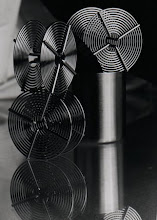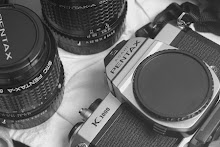Technology is inescapable in photography. No matter what we do, we are bound to it. In nature, photosensitivity is rare; it occurs all the time, particularly in plants, but it does not occur in ways that are easily perceptible to us as people. We definitely do not see nature being photosensitive in a way that will draw images for us at our command. Nature does not operate a camera. Cameras are a human creation.
Even if we eliminate the camera from our photographic process, we will still be bound to technology. Occasionally in your explorations of Photography, you will come across camera-less photographs. Even those photographs were bound in some way by technology. The paper that was used was built with a special and specific set of chemicals. It came into contact with other chemicals in a special and specific way. The result was an image, fleeting or permanent, that you can view.
We cannot escape technology in Photography.
We can, however, use what we have better.
I am willing to bet that over 90% of our problems as photographers lie not with the equipment, but with us as operators. Maybe you are an advanced professional, and you do have situations where you need a certain specialized set of equipment to make those images that you sell commercially. Even then, I think, there is a good chance that a majority of the problems that had to be overcome in a photographer’s career had not to do with the equipment, but with our understanding of how we should use what we have.
The math is not all that glamorous. Measuring light is hard to write about and hard to talk about because it is so situational. To make matters worse, the world is a complicated place. Inside the frame of our composing, we still see sometimes hundreds of images and shapes that are too complex for us to really understand. Consider a picture of a a tree. Do we really know all there is to know about how lights, darks and midtones will show up on the negative before we snap that picture? Are there not hundreds of shapes and details in that overall image? Do not each and every one of the leaves on that tree reflect the natural sunlight in their own way, when seen from the camera’s point of view?
Understanding those details, in advance, and receiving the light with the equipment in the right way is a lot of what photography is about. In order to do this well, we need to know ourselves, know our equipment, understand its limitations, and also know and understand the situation that is before us. Particularly, it’s important that we understand how light flows through the place where we are taking the picture. And, we must understand how the light flows into, through and around our equipment and ourselves.
If you know that you cannot frame the image you want to capture because the lens won’t focus at the distance that would get you close enough to make that picture, then you have an equipment problem. If you know that your subject is so far away that the image does not fill the frame as you need it to, you have an equipment problem. If you can’t open up the aperture far enough, if you can’t get a shutter speed that is fast or slow enough, if you are in an environment that will destroy the camera, then you have equipment problems.
Most of the time, we actually have equipment problems with the photographer, not with the camera.
Your camera needs to be in good working order for its design. If you have light leaks that are ruining your film, if your film advance jams, if you dropped the camera and broke a part, then you have equipment problems that need repair. Go to a camera shop, get a repairman to help you size up the situation, then make the decisions within your budget that either fix it, or let you carry on despite it. Broken cameras are a source of equipment problems.
Fancy cameras owned by someone else are a source of jealousy problems.
We all have desires. And, yes, I will tell you that having good equipment is a blessing. It’s great, sometimes. And, yes, I will tell you that photography is easier when you have the money for it. If you can make some mistakes and use some resources without breaking the bank, having some money to spend on the photographs will really help you. But, I can tell you from experience that the great equipment that you daydream about will not necessarily automatically improve your pictures the moment it arrives in your hands.
All new pieces of equipment come with their own limitations and responsibilities, just like the equipment that you probably already have. I believe I learned from woodworking that all new tools come with at least five new responsibilities for every problem that they can fix. Cameras are tools; they are like that, too.
Eventually, you can get better equipment. Sooner or later, if you persevere, you can get some. When you do, enjoy it. But know that, even though photography is always intimately connected to the technology used by the photographer, the decisions we make about how to manage the light to create our photograph are more powerful and influential on the final image than the make or model of the camera itself.
You can do it. You can make better pictures. And, you probably don’t need that great and expensive equipment to do it. What you probably need to do, in those days when you are daydreaming about better equipment, is to make better use of what you already have.







No comments:
Post a Comment